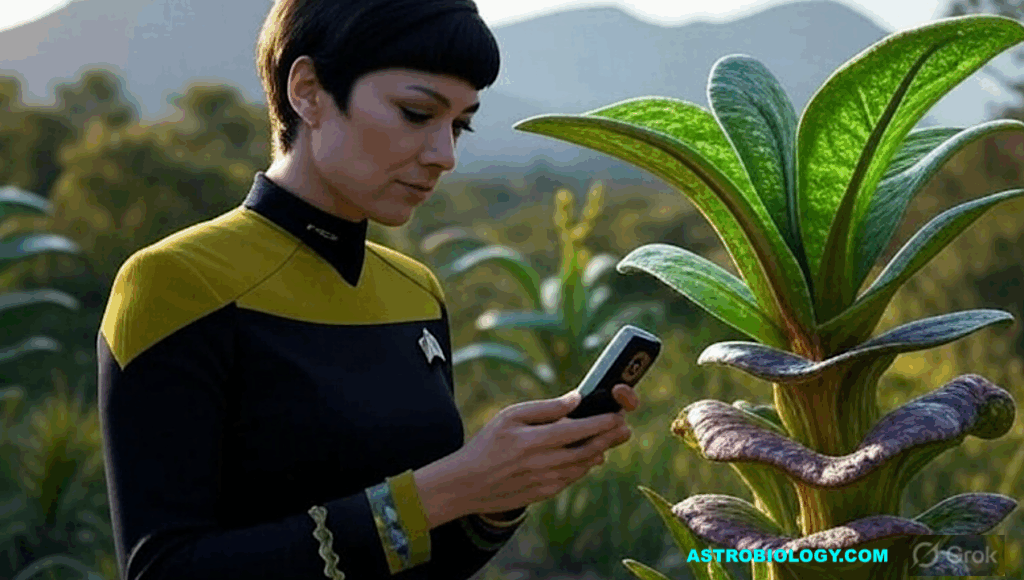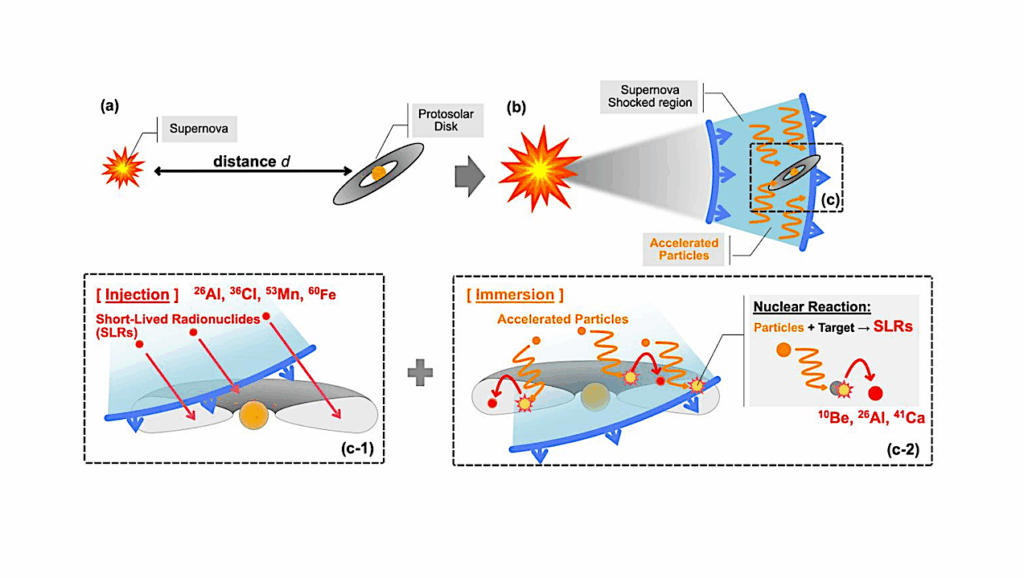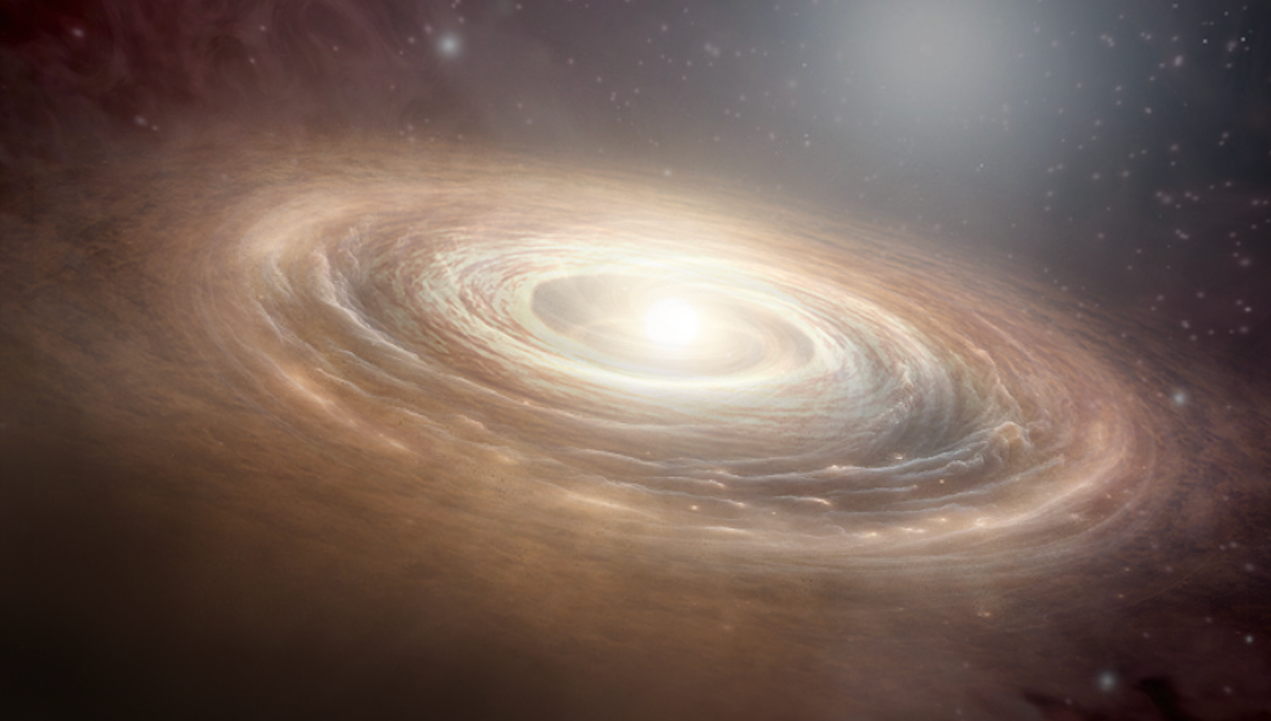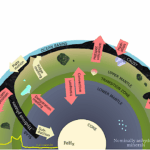Now Reading: Raman Spectroscopy As A Tool For Assessing Plant Growth In Space And On Lunar Regolith Simulants
-
01
Raman Spectroscopy As A Tool For Assessing Plant Growth In Space And On Lunar Regolith Simulants
Raman Spectroscopy As A Tool For Assessing Plant Growth In Space And On Lunar Regolith Simulants
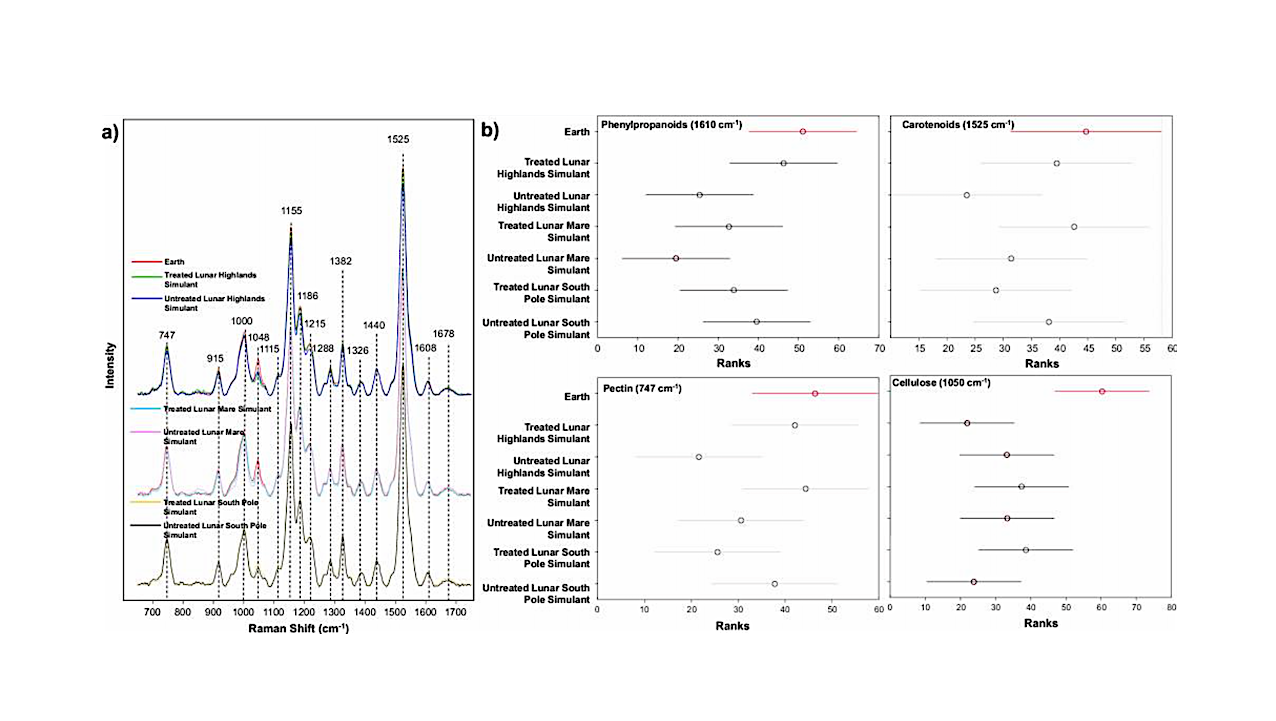

Averaged Raman spectra (a) acquired from A. thaliana grown on treated and untreated lunar regolith at 47 days old. Changes in the intensities of vibrational bands that can be assigned to phenylpropanoids (1610 cm−1), carotenoids, (1525 cm−1), pectin (747 cm−1) and cellulose (1050 cm−1) are reported in the post-hoc graphs for Kruskal–Wallis (b). Mean rank of the intensities of vibrational bands is shown by dots; comparison intervals are shown by horizontal lines. — NPJ Microgravity via PubMed
Colonization of the Moon and other planets is an aspiration of NASA and may yield important benefits for our civilization.
The feasibility of such endeavors depends on both innovative engineering concepts and the successful adaptation of life forms that exist on Earth to inhospitable environments.
In this study, we investigate the potential of Raman spectroscopy (RS) in a non-invasive and non-destructive assessment of changes in the biochemistry of plants exposed to zero gravity on the International Space Station and during growth on lunar regolith simulants on Earth.
We report that RS can sense changes in plant carotenoids, pectin, cellulose, and phenolics, which in turn, could be used to gauge the degree of plant stress in new environments.
Our findings also demonstrate that RS can monitor the efficiency of soil supplements that can be used to mitigate nutrient-free regolith media. We conclude that RS can serve as a highly efficient approach for monitoring plant health in exotic environments.
Raman spectroscopy as a tool for assessing plant growth in space and on lunar regolith simulants, NPJ Microgravity via PubMed
Astrobiology,
Stay Informed With the Latest & Most Important News
Previous Post
Next Post
-
 012024 in Review: Highlights from NASA in Silicon Valley
012024 in Review: Highlights from NASA in Silicon Valley -
 02Panasonic Leica Summilux DG 15mm f/1.7 ASPH review
02Panasonic Leica Summilux DG 15mm f/1.7 ASPH review -
 03From Polymerization-Enabled Folding and Assembly to Chemical Evolution: Key Processes for Emergence of Functional Polymers in the Origin of Life
03From Polymerization-Enabled Folding and Assembly to Chemical Evolution: Key Processes for Emergence of Functional Polymers in the Origin of Life -
 04How New NASA, India Earth Satellite NISAR Will See Earth
04How New NASA, India Earth Satellite NISAR Will See Earth -
 05And Thus Begins A New Year For Life On Earth
05And Thus Begins A New Year For Life On Earth -
 06Astronomy Activation Ambassadors: A New Era
06Astronomy Activation Ambassadors: A New Era -
07SpaceX launch surge helps set new global launch record in 2024














